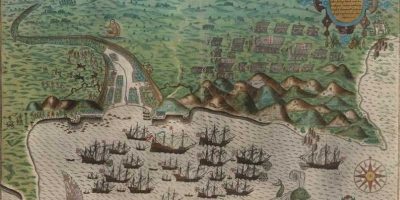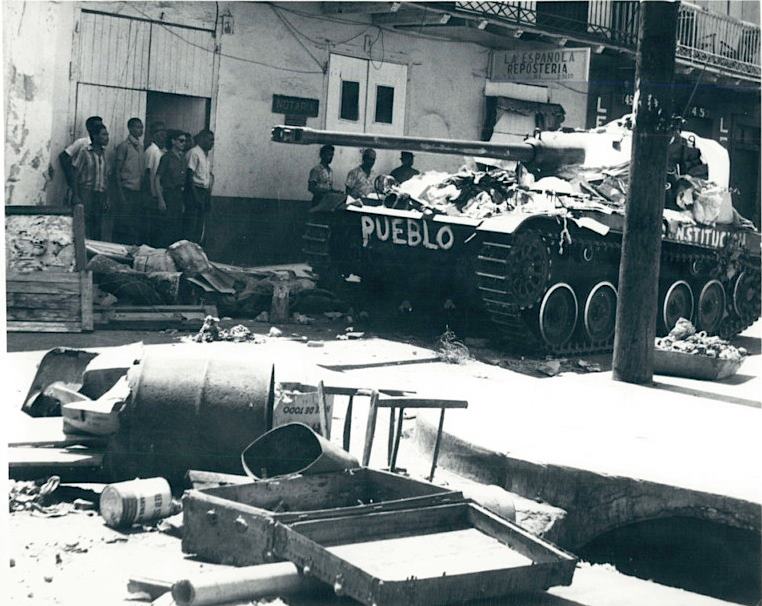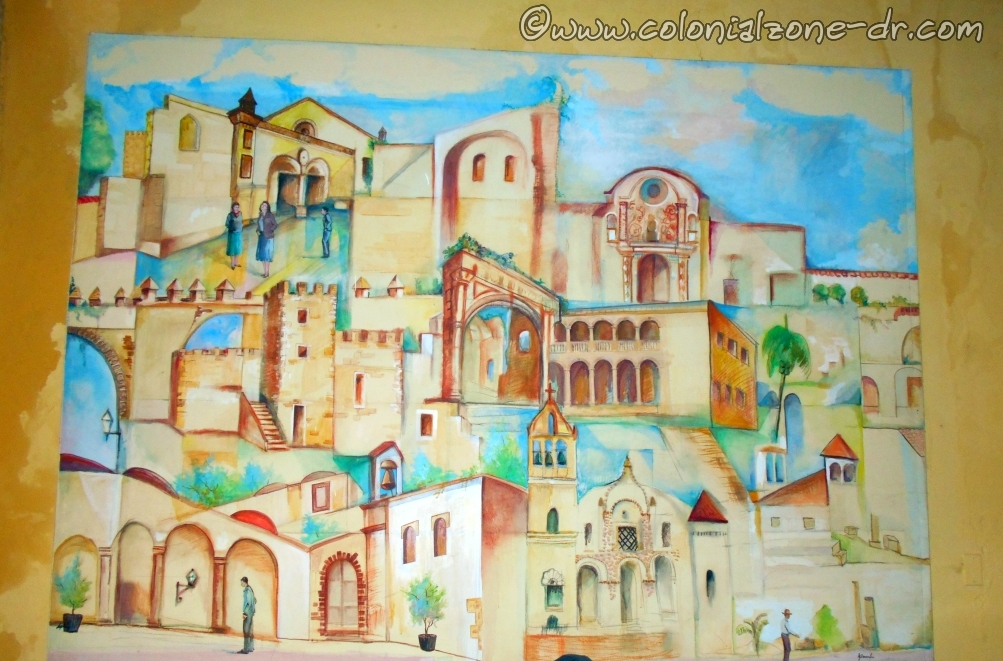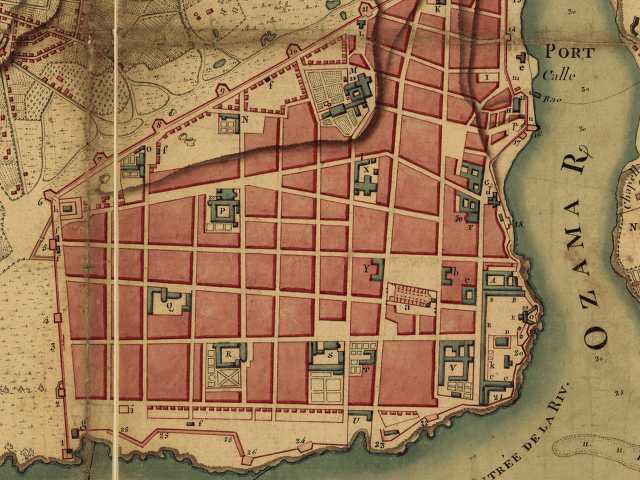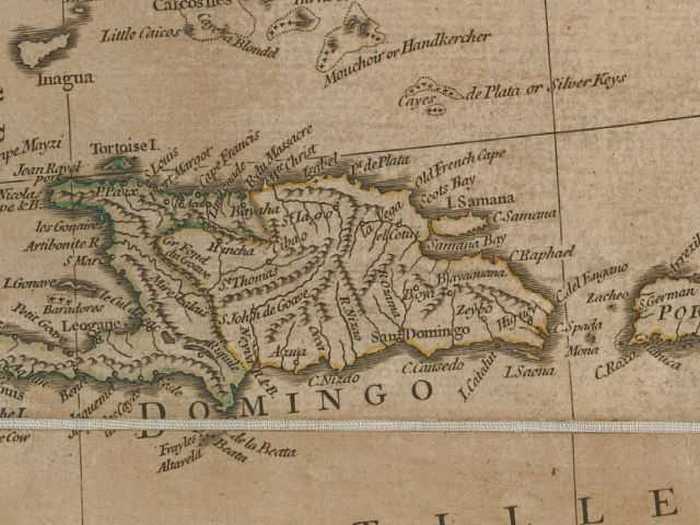Sir Francis Drake
Sir Francis Drake, Pirate Drake also known as Privateer Drake (1541-1596) was known for many things. Spain called him a pirate and England called him a sailor and privateer.
History | Slave Trade | The Commission | Santo Domingo Invasion | Voyage Maps | Drake Settles Down | Interesting Facts
History
Francis Drake was born in Tavistock, Devon, England in either 1541 or 1542. He was the son of Edmund Drake, a farmer later turned preacher.
The Drake family fled to Kent during the Roman Catholic uprising of 1549. When Francis, the second son in a large family, was 13 he went to sea on a cargo barge. By the time he was 20 he became master of the ship.
When the captain of the ship died Drake assumed command making his first sail to the new world when he was 23. He was involved in some of the first English slave trade expeditions. Loved by Queen Elizabeth 1, Drake went on to become one of the most famous men in Elizabethan times. As a sailor, adventurer, navigator, politician, engineer and landowner, he was a legend in his own lifetime.
Slave Trade
Sir John Hawkins, a cousin of Drake, was given permission from Queen Elizabeth to make his first voyage in 1562. Drake accompanied him on this voyage. Hawkins was to bring Africans to the Americas under their own free will. He agreed to this condition but did not do as he said. He captured the Africans, promising them free land and riches in the new world. Then he sold most of the slaves in what is now known as the Dominican Republic. Then Hawkins returned home with a large profit and ships laden with ivory, hides, and sugar. Thus began the British slave trade.
When the ship Hawkins manned returned to England Queen Elizabeth was horrified. She said that what he did was detestable and it would call down vengeance from heaven upon all who took part. But, after she saw the money that could be made, she joined in a partnership with Hawkins and even gave him his a new ship called Jesus of Lubeck, also known as The Good Ship Jesus.
It is very ironic that Drakes’ cousin and Drake himself were considered to be very religious men. Hawkins required his crew to serve God and to love one another. Drake held services on board his ship twice a day.
I cannot understand this, it was OK for him to lie, cheat and steal. Taking the African people by their lies and false promises. Stealing the belongings of others. And they still considered themselves to be religious.
The Commission
In 1577 Queen Elizabeth I commissioned three men to sail around the world. On November 15, 1577. The Queen’s Corsair consisting of the captains Sir Francis Drake (whom she called lovingly, “my dear pirate”), John Winter, and Thomas Doughty set sail on their voyages.
In time Drake became the leader of the group. He was to attack all Spanish settlements. Drake sailed to America with 40 ships and more than 2,000 soldiers. He attacked the Spanish ports throughout the Caribbean.
Drake sailed his ship “The Golden Hind” on December 13, 1577. Francis Drake became the second man to sail around the world and the first Englishman to accomplish this feat on September 26, 1580.
Upon Drakes return to England he presented the queen a very large bounty. Now she really loved her “dear pirate”.
On April 4, 1581 he was knighted by Queen Elizabeth on the deck of the Golden Hind. This act gave Francis Drake a title. He became Sir Francis Drake, mayor of Plymouth and a Parliament member. The Queen also presented him with a special sword. Because of all the attention she paid to Drake others followed in his footsteps and became privateers also.
Francis Drake hated the Spaniards and their Catholic religion, probably having to do with his families flight from their home when he was young. He devoted his life to fighting against the Spanish and all they controlled. They called him a pirate but England called him a sailor and privateer.

Drake at age of 43, with the coat of arms conferred on him on April 4, 1581, after he was knighted at Deptford, on the deck of the Golden Hind, the first English ship to go around the world. To see a larger view of this picture and to read “Sir Francis Drake : A Pictorial Biography with an Historical Introduction by Lt. Commander David W. Waters & Richard Boulind and a Detailed Catalogue of the Author’s Collection” in the rare book section of the US Library of Congress.
Invasion
January 1586 Sir Francis Drake landed at the Spanish colony of Santo Domingo bringing the entire city to its knees. His invasion and demolition weakened the Spanish dominion over the island.
For more than 50 years everything in the colony was abandoned and left to the mercy of the pirates. Drake drove the Spanish garrison out of Santo Domingo. He burned the city methodically, piece by piece until he received a ransom of 30,000 crowns. The amount he wanted was much more but he settled on this ransom. It is also told that the people of Santo Domingo gave him all their treasures. After much persuasion by the towns people, and when there was nothing else to take, Drake left the ruined city.
The church Santa María, the first church in the new world, was ransacked and burnt. Treasures were stolen and records burnt. The graveyard behind the chapel and its records were destroyed also. This left no records of the people who were interred there. The San Francisco Monastery was also significantly damaged in Drakes 1568 invasion on the city.
After Drakes invasion on Santo Domingo, he moved on to Cartagena (now known as Columbia) and St. Augustine (in Florida, USA). The war between England and Spain started because of these terrible acts of piracy.
Voyage Maps
Drake sailed directly west from Santiago in the Cape Verde Islands off the coast of West Africa. The first port Drake reached in the West Indies was Santo Domingo in Hispaniola, present-day Haiti and Dominican Republic. This image shows the English fleet in the bay, and the infantry battalions attacking the town. This map represents the first printed view of this locality.
To see this map and more about the Caribbean Raid. Many interesting PDF maps of Sir Francis Drakes early voyages.
Drakes Settles Down
Sir Francis Drake returned to England, got married and lived on a large estate outside of London. On January 28, 1596, he died aboard his ship the Defiance. He was struck by a tropical disease that he probably picked up during his last trip to the Americas. He died and was buried at sea. It was said that he got out of his deathbed early the morning of his death and tried to put on his suit of armor. He wanted to die as a soldier.
Sir Francis Drake died of dysentery when he was about 55. He was buried at sea in a lead coffin off Puerto Bello to the sound of trumpets and cannons.
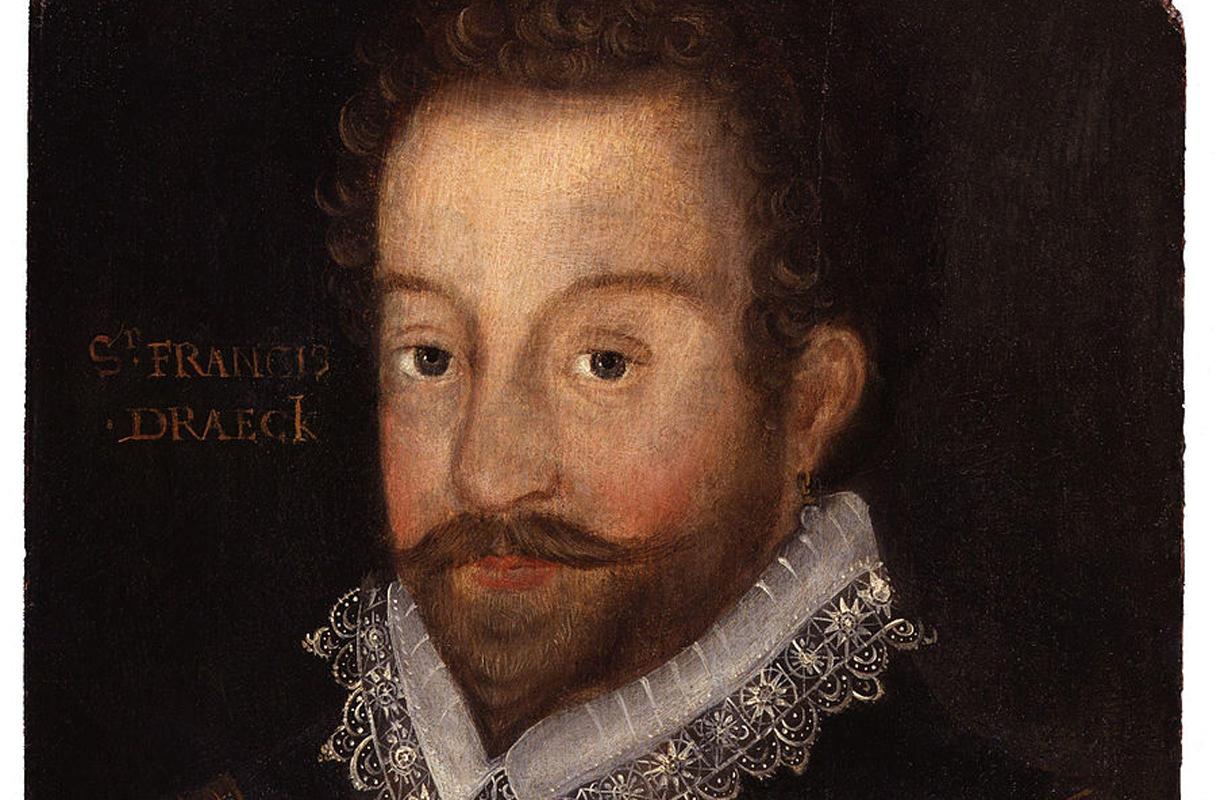
Interesting Facts
*There were many different types and classes of what we clump together as pirates now.
– Pirate is a robber and destroyer of ships at sea.
– Buccaneer was originally an inhabitant of Hispaniola. The name coming from a Taino word boucan or barbecue. Because these people were said to prepare their meat in this manner they were originally called boucaniers.
– Privateer was a privately owned ship and crew hired by a national government during wartime to plunder the ships of an enemy nation.
– Corsair was a Mediterranean pirate of the 16th century.
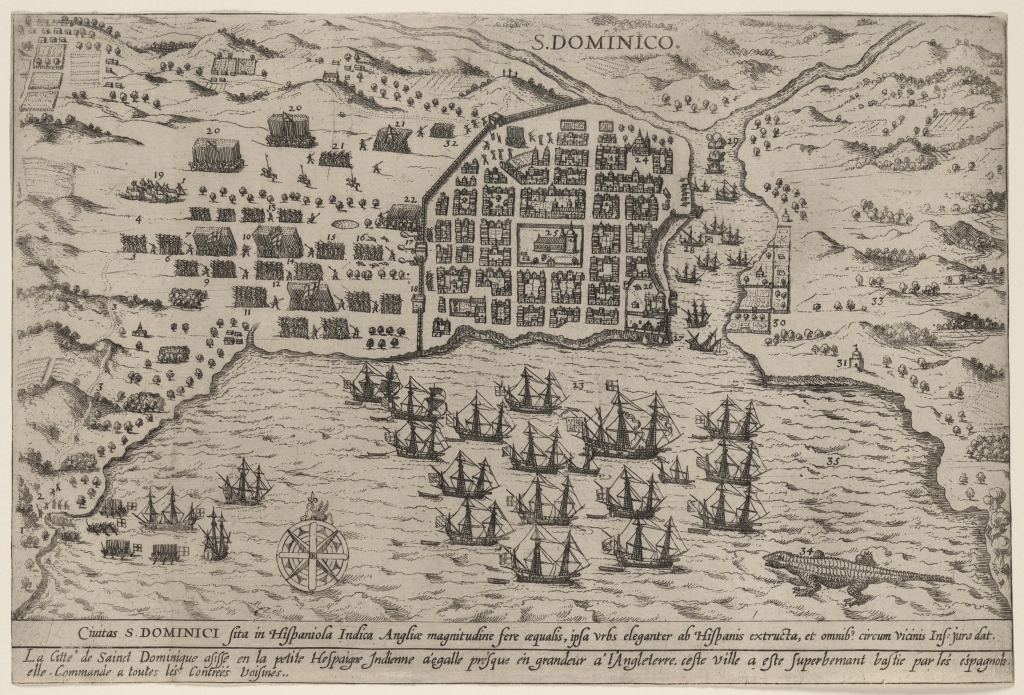
*The Golden Age of Piracy came about soon after the discovery of the New World and continued for about 250 years.
*When the Pope divided the New World between Spain and Portugal in 1494 the other European nations were not very happy. They wanted some of the stolen Aztec gold also. War was a given.
*The New World coast from South America through the Caribbean to Northern Florida was known as “The Spanish Main”.
*In 1630 a treaty was signed with Spain enabling the English and French to colonize some of the lands along the Spanish Main.
*One of the main sources of food the settlers consumed on the island of Hispaniola was the wild pigs originally introduced by the Spanish. The pigs were barbecued on open fires called buccans or boucan. This is how the settlers got the title buccaneers.
*The Spanish were getting a little nervous because of all the buccaneers on Hispaniola. They sent hunters to kill all the pigs which in turn made the buccaneers turn to piracy because their food source was gone. Later Spain realized they made a dire mistake.
*Many of the buccaneers (they called themselves Brethren of the Coast) moved on to a new island named Tortuga/ Turtle. It is located off the coast on the Haitian side of the island. This island became a sanctuary for the Buccaneers because of its perfect habitat and location.
*Not all pirates were fierce outlaws. Many were just sailors trying to make a living the only way they were able.
*Many things about how the ship would be run was agreed upon by all before the ship left port. They decided where to sail, how the bounty would be divided (usually the most going to the captain, then the skilled labor on the ship and the least amounts going to the laborers), and who would be captain.
*Sir Francis Drake introduced pipe smoking to Elizabethan age of England.
*Drake named Virginia in United States after Queen Elizabeth, the Virgin Queen
Other famous pirates I found that visited the Santo Domingo colony included
*Blackbeard – (Edward Thatch or Teach) Samana Bay in Hispaniola (Dominican Republic) in 1718?
*William Kidd, also known as The Unlucky Pirate.
*Sir Henry Morgan, also known as The Pirate King (1654 in Hispaniola)
For more information on Sir Francis Drake check out these web sites –
Golden Hind | The Un Museum.org | Library of Congress – Exhibitions


